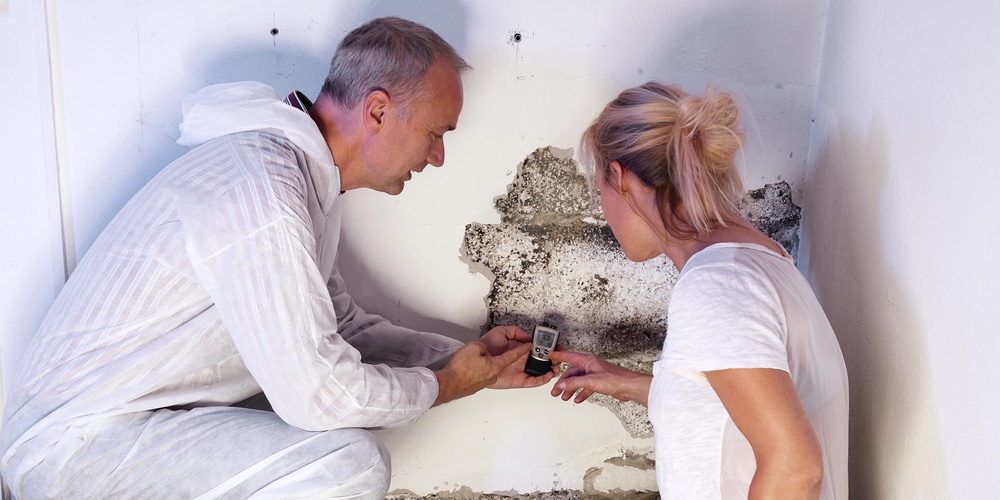If mould exists, how does it spread? Mold is a microscopic organism, too small to be seen by the naked eye, although it can be found practically anywhere and on almost any substance, especially in warm, moist environments. Because of this, you should conduct thorough mould testing in your home and workplace, especially in any rooms where you spend a lot of time. Mold is beneficial because it decomposes organic materials, such as dead plants and animals, and returns the resulting nutrients to the ecosystem.
Mold can thrive almost anywhere there is organic matter such as dead leaves, paper, insulation, or wood. Mold destroys whatever it feeds on and spreads through the air in the form of tiny spores. For the sake of everyone's health, especially that of infants and the elderly, it is urgent that you start checking your home and place of business for mould as soon as possible.
So, how can one do an accurate mould test? Because different species of mould cause varying degrees of damage, it may not always be sufficient to simply diagnose the presence of mould. Therefore, mould testing entails more than merely looking for the presence of mould to determine its toxicity; rather, it is an opportunity to learn about the many types of mould, which are hazardous and which are innocuous, and how to stop the mould from spreading in the future. However, since "no mould" is "good mould," you may ensure that the truly dangerous varieties of mould are eliminated along with the more benign ones by performing a thorough cleaning of your house or place of business even if you don't have time for comprehensive testing and study.
So, here are a few methods that are commonly used to test for mould. Some are more difficult than others, and will take more time and perhaps specialised equipment to accomplish. As for the rest, they're all quite basic. You may rest assured that any amount of mould testing is preferable to none at all, so pick whichever option most appeals to you.
1. Mold spores can be collected from a residence, placed in a Petri plate with agar, and sent to a lab to be cultivated and identified. Gathering a representative cultural sample is the term for this procedure. The drawbacks of this procedure include the lengthy wait time (often two to three weeks) and the possibility that the agar will contaminate your house mould sample through competition.
Secondly, you can attempt collecting non-culturable samples, which are often returned to you within twenty-four hours. If you collect a sample of mould on a slide and send it to a lab, they'll be able to tell you not only how extensive the mould growth is in your home, but also what kind of mould it is. The approach has the limitation of not being able to identify the specific species of mould present. Tape can be used to collect non-culturable samples from a wall, duct, attic, etc., whereas the Air-o-Cell technique can collect samples directly from the air.
There is a wealth of resources online for anyone interested in mould testing, including specifics on culturing and other non-cultivable techniques. Finding out whether or not mould is a problem in your home, how severe it is, and what can be done about it can be accomplished with some time and effort spent online and in books.
Professional Mold Testing and Cleanup Services
Research shows that there are more than 100,000 different types of mould that can cause problems for a home and its occupants. The effects of mould on a building and its occupants are twofold. Walls and ceilings made of organic materials can rot, and it can also lead to respiratory illnesses and other infections in humans.
For this reason, remediating mould growth or repairing mould damage is essential. To assess the level and kind of mould damage, mould testing must be performed before mould remediation may begin.
Proper mould spore testing requires specialised equipment, which can only be provided by expert mold testing services. They will start by taking a look around your property. Mold remediation specialists typically have extensive industry knowledge and can quickly identify the source of the problem. Ceilings, walls, wall papers, and locations near moist areas such as sinks or bathtubs are frequently targeted by pests. Due to the fact that mould may thrive in both visible and invisible environments, spotting an infestation can be a challenge. Mold, for instance, can multiply rapidly in the cracks between walls, where it would go undetected by the naked eye.
Once the contractor has completed the visual inspection or walk through, they will use an airborne mould checker, which will require specialist equipment. It's normal for there to be some mould in the air in any given home, but issues arise when levels rise above a particular threshold. If the contractor finds mould in the air, he or she will do a more thorough inspection of your home to identify problem areas.
After the results of the inspection are in, the mould removal company will go to work. If the mould damage is severe, he may use chemicals to clean up your property or he may remove construction debris from your home. Cleanup is best left to a professional contractor who can ensure the job is done right. Cleaning up mould on your own could result in the missed removal of mould spores from some sections of your home. When people try to restore or clean up mould on their own, they risk getting sick if they don't know what they're doing or if they don't wear protective gear.


No comments yet